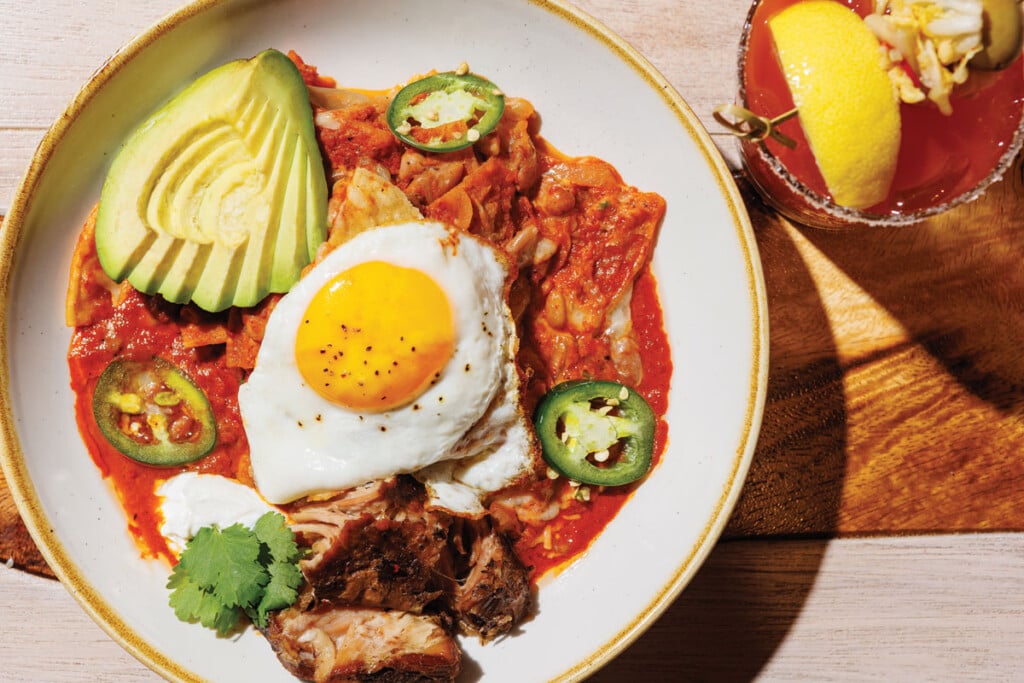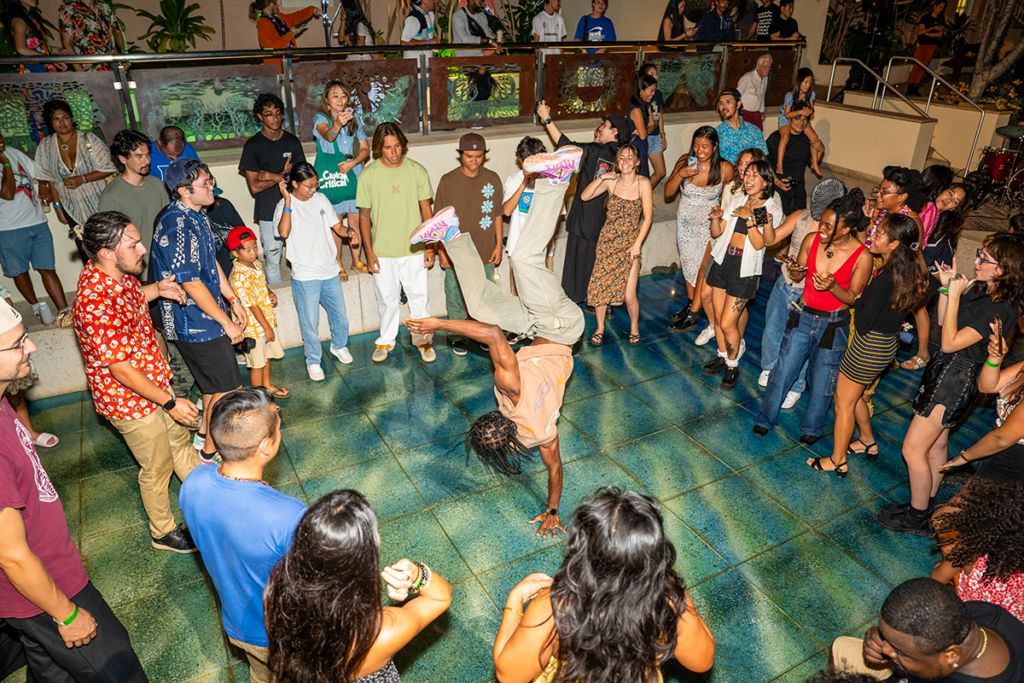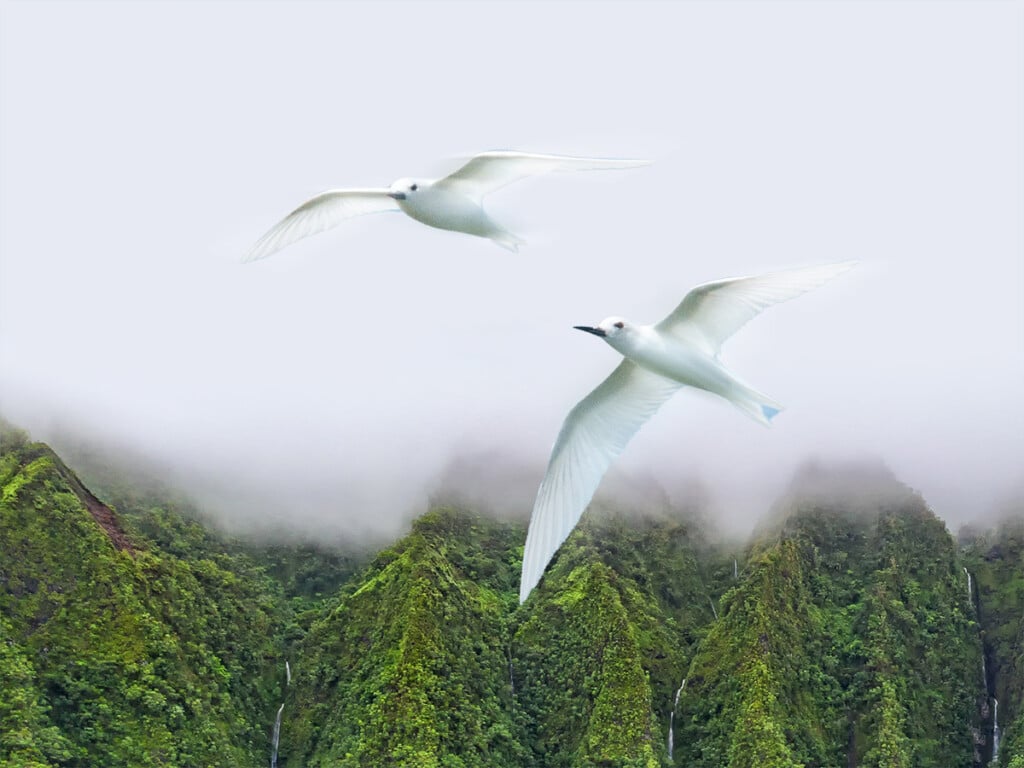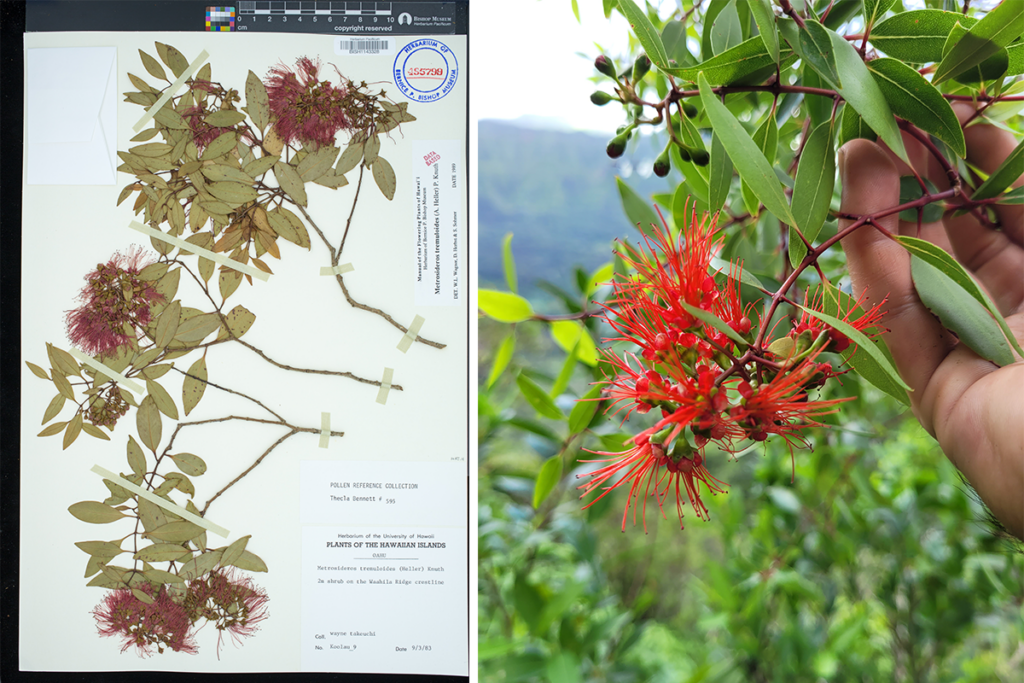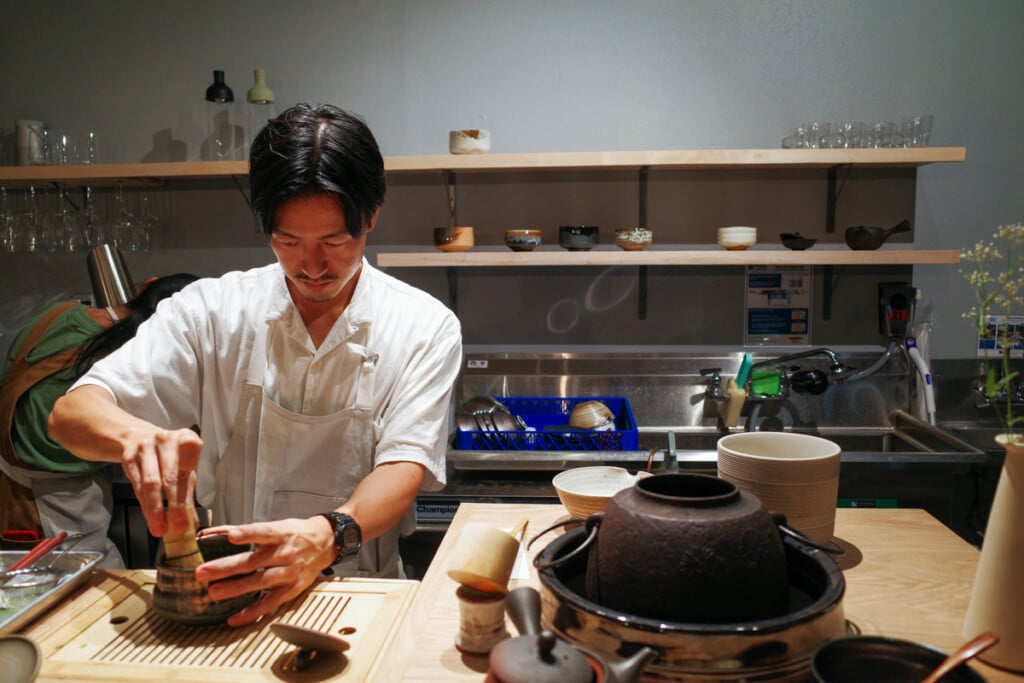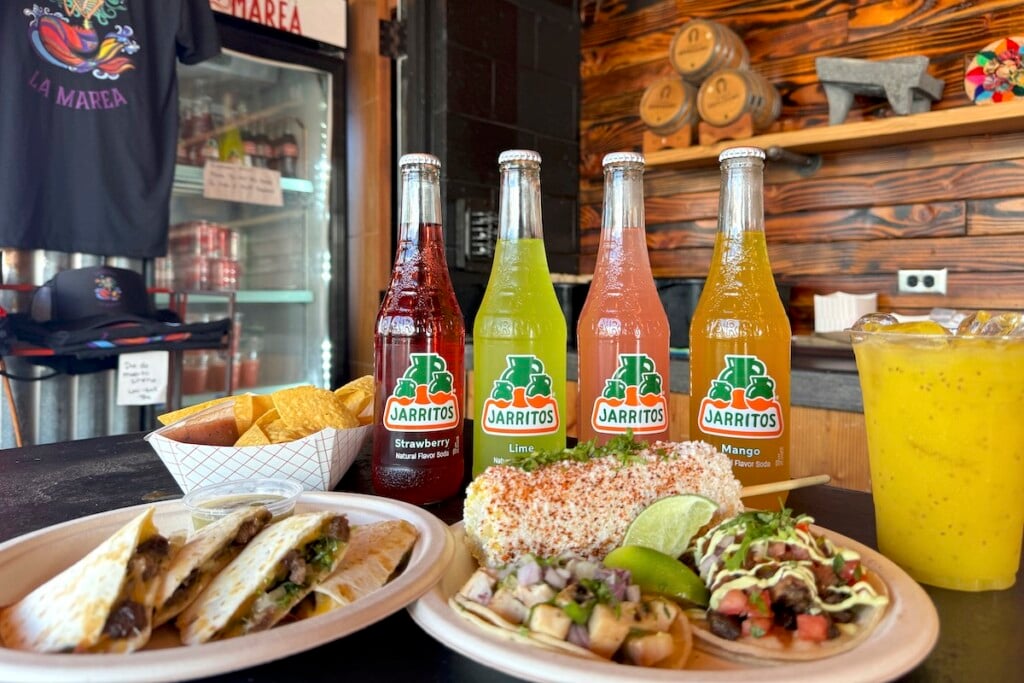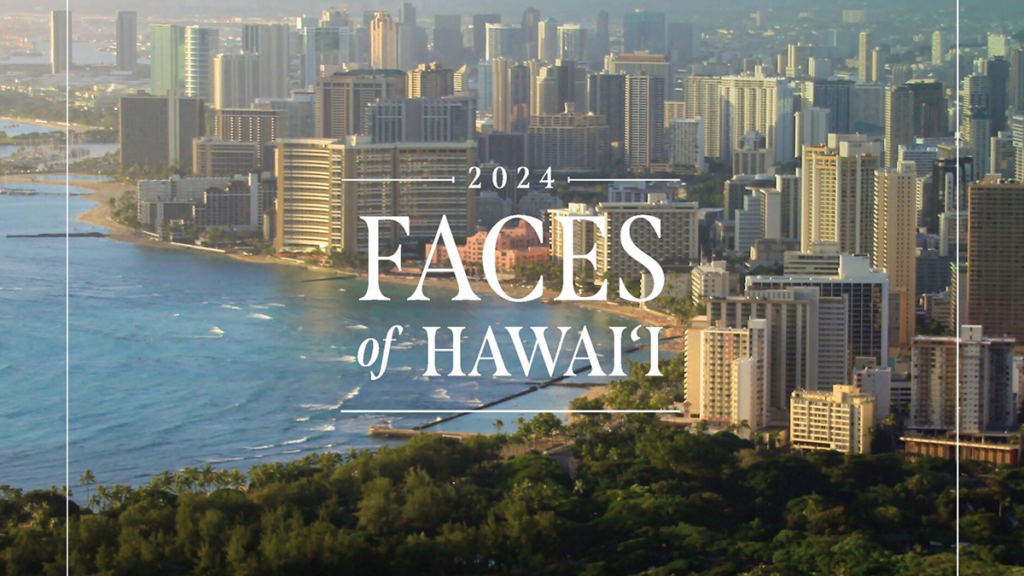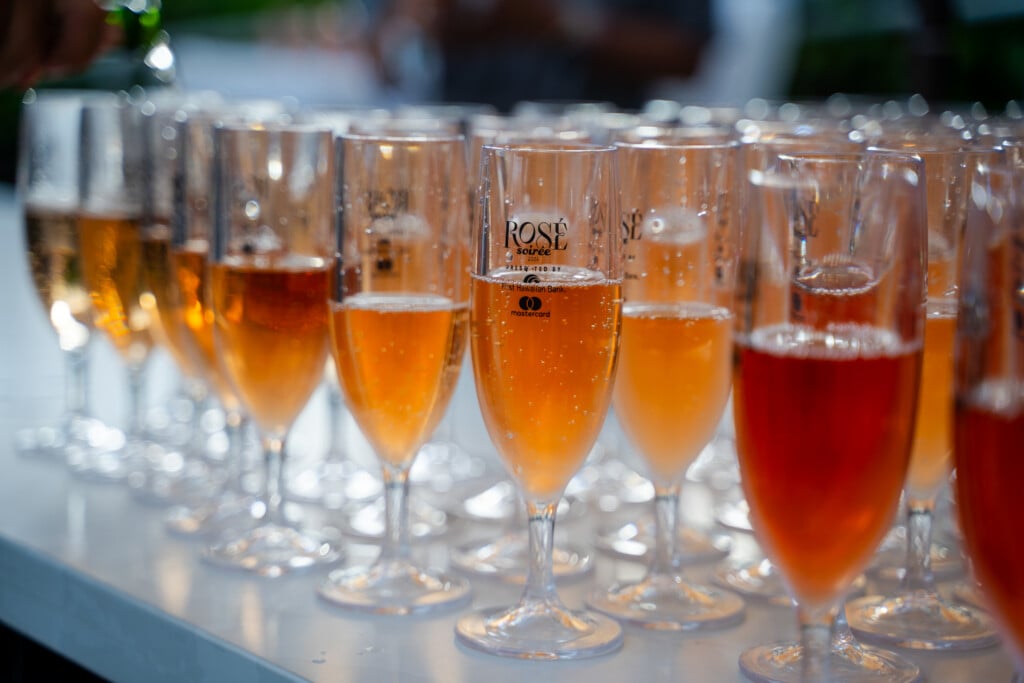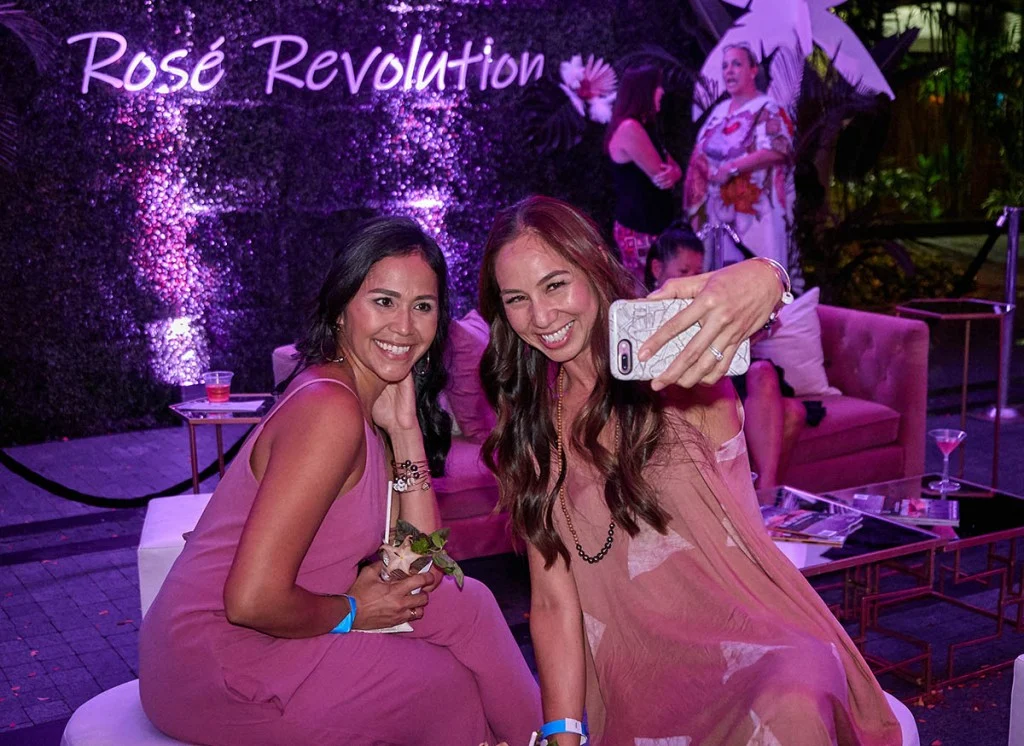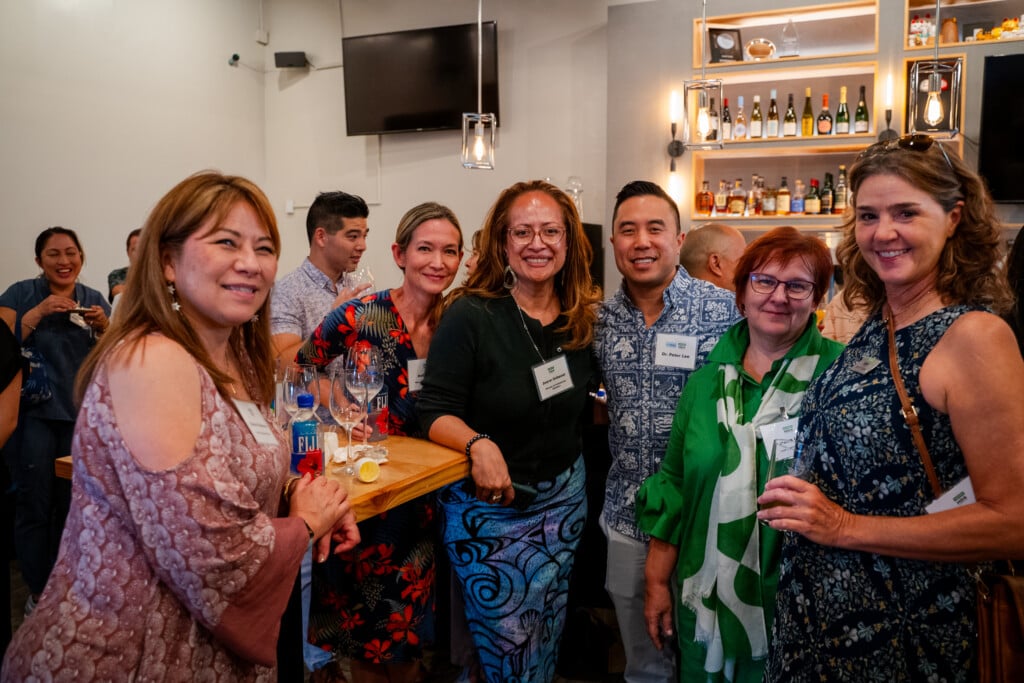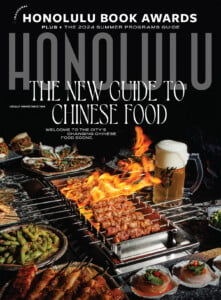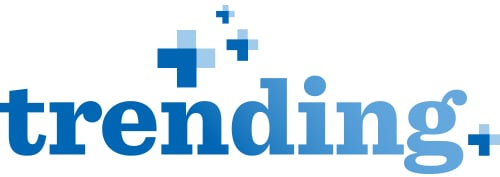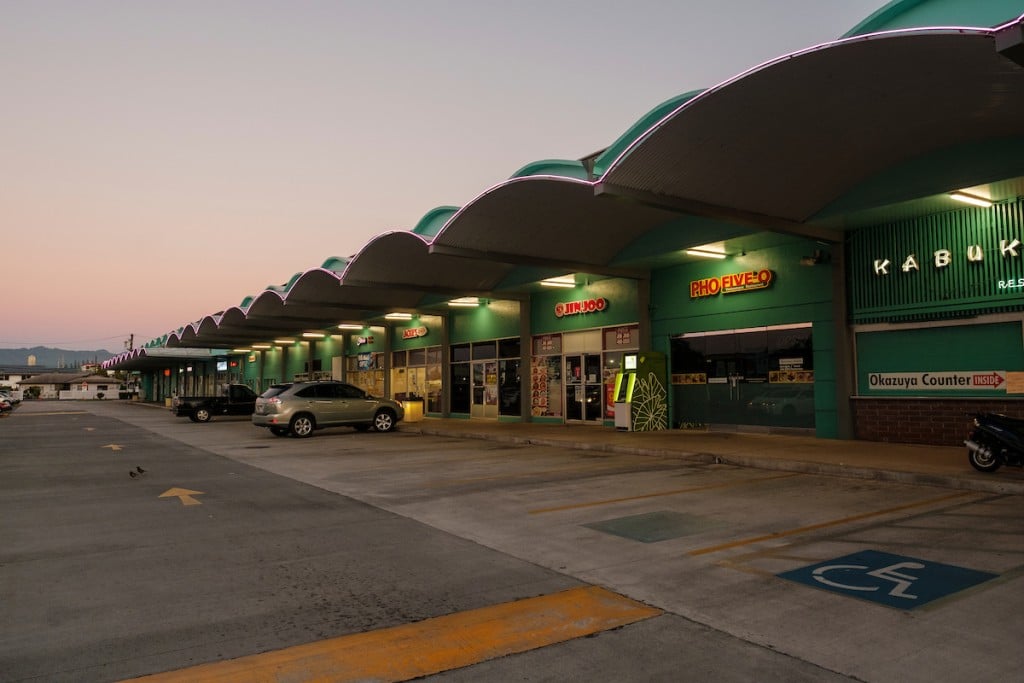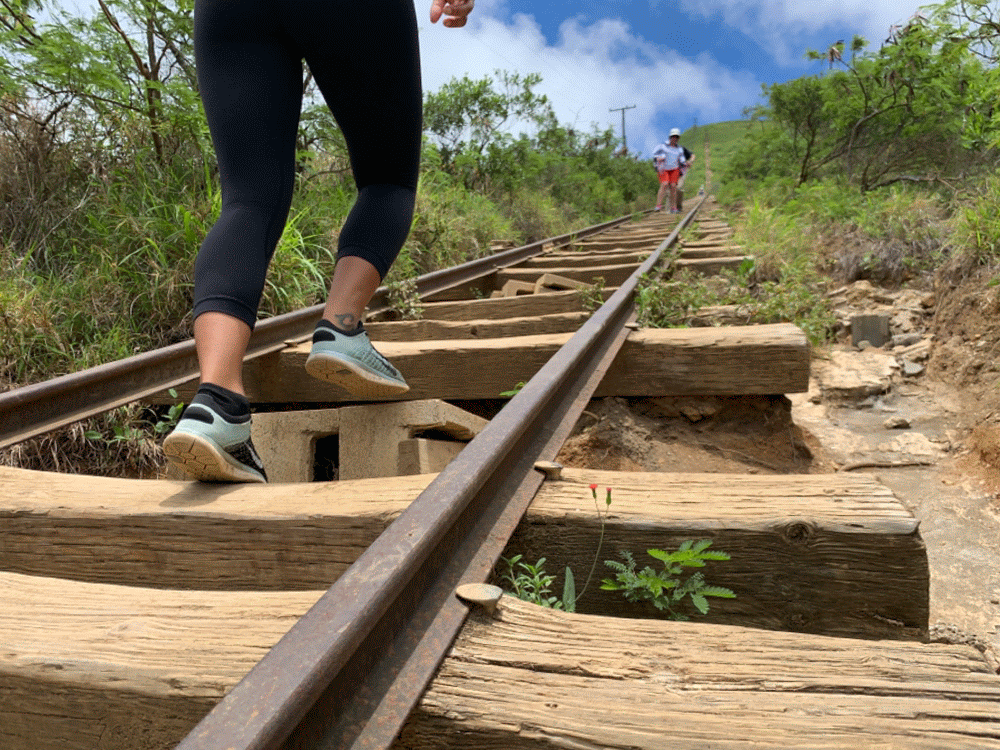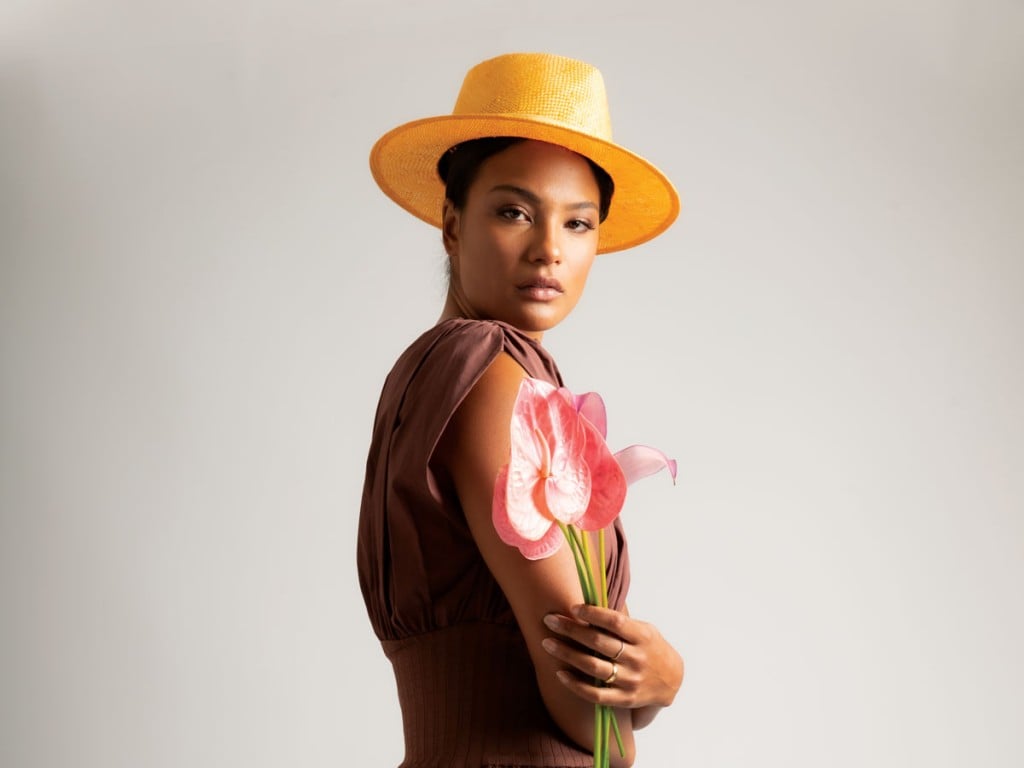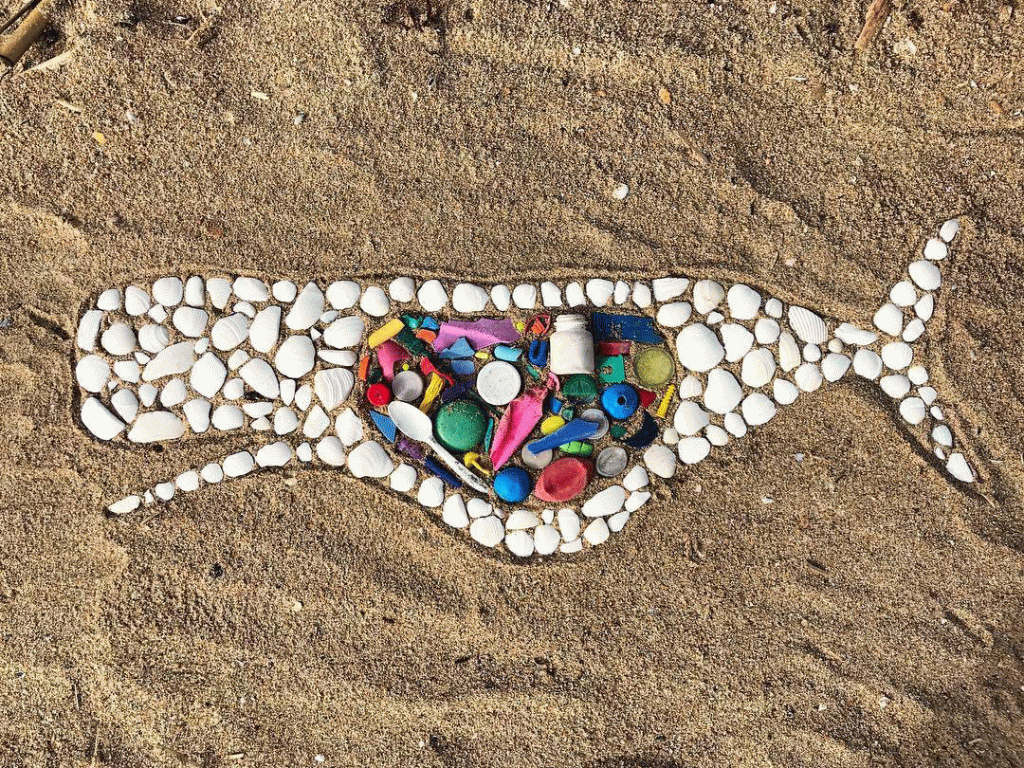100 Years of Hawaiian Music
Hawaiian music, however flexible, has its own distinctive personality.

A Kohala Seminary student poses with her ukulele in this 1912 photo. Photo: Bishop Museum.
When we set out to chart the past 100 years of Hawaiian music, we realized how lucky Hawai‘i is in its musical traditions. Most musical genres have a shelf life, a creative arc over which their creative vitality waxes and wanes. Polka, for example, was once one of the most popular dances in the U.S.; good luck making it on MTV with an accordion these days.
But Hawaiian music is different. Its roots in language and culture give it an almost inexhaustible flexibility, letting it incorporate outside influences, from swing to jazz to rock, without losing its own distinctive personality. Trace its development from the monarchy era to the age of rock ‘n’ roll, and you’re struck by Hawaiian music’s ability to remain relevant to each new generation, and by its continued popularity not only in the Islands, but across the globe. It’s possible to argue over what exactly constitutes Hawaiian music, but make no mistake, it’s alive and well in 2010.
An editorial note: One hundred years is an admittedly arbitrary span of time. Hawaiian music, and the chants that preceded it, had of course existed for hundreds of years before we pick up the narrative thread in 1910. But we could only pack so much history into 23 magazine pages, and the 20th century has been an amazing period of evolution and expansion for Hawaiian music. We hope you enjoy, and encourage you to use this overview as a jumping-off point for further musical exploration. Happy listening.

The Island music being played in the Hawaiian Pavilion entranced visitors to the Panama Pacific Exposition. Photo: Courtesy Harry B. Soria Jr.
The Teens: Hawaiian Music Hits the Mainland
It had been percolating on the mainland for decades, but, in 1915, a single event rocketed Hawaiian music to the big time. The Panama Pacific Exposition in San Francisco, celebrating the recently completed Panama Canal, featured attractions from all over the world, including the young territory of Hawai‘i. By the end of the seven-month-long exposition, 17 million people had visited the Hawaii Pavilion, featuring hula and songs by the Royal Hawaiian Quartette. Thanks to the catchy tune “On the Beach at Waikīkī,” Hawaiian music became an overnight sensation.

A NEW SOUND Albert “Sonny” Cunha is regarded as the “chief popularizer” of hapa haole music at the beginning of the 20th Century, penning such influential songs as “My Waikīkī Mermaid” and “Honolulu Hula Girl.”
The tropical sounds performed in San Francisco caught the imagination of Tin Pan Alley in New York, sparking a wave of new compositions, and paving the way for Hawaiian musicians to tour the Mainland and be recorded along the way. The hapa haole music being produced at this time didn’t often have much to do with real Hawaiian culture (The jokey “Yacka Hula Hickey Dula” was a typical hit.), but the world’s fascination with Hawai‘i fueled a tremendous outpouring of creativity and commerce.
“By 1916, Hawaiian records were outselling practically everything else on the Mainland,” says Hawaiian music historian Amy Stillman. “Victor Records’ catalog was full of Hawaiian music, and Edison Records’ monthly newsletter noted that Hawaiian music was selling more than any of its other releases.” The ride was just beginning.
Essential Cuts of the Teens[ 1915 ] Henry Kailimai’s “On the Beach at Waikīkī,” [ 1915 ] Johnny Almeida’s “Kanaka Waiwai,” [ 1915 ] Charles E. King’s “Na Lei O Hawai‘i”, [ 1916 ] Alfred Alohhikea’s “Pua Lilia”, [ 1916 ] Matthew Kane’s “Ka Makani Kaili Aloha” |
The Last Acoustic Decade
Music recording was a new and exciting technology, having been invented just a decade earlier, but for the most part, live music performances and sheet music still ruled in the Teens. People played the popular hits of the day in their own homes, on the family piano, and cultural pageants and parades such as the Kamehameha Day celebration were a vital form of entertainment.

Ray Kinney sings with the Royal Hawaiian Hotel orchestra, led by Harry Owens. Photo: Hawai‘i State Archives
|
|
The Twenties: Hawaiian Music Gets Electrified
Rival stations KGU and KDYX both started broadcasting on the same day in May 1922, and Hawaiian music was a staple on each from the beginning. KGU’s inaugural broadcast featured Johnny Noble’s Moana Hotel Orchestra, and listeners were soon enjoying daily doses of free entertainment over the local airwaves.
|
|
In 1925, Bell Telephone Laboratories released “orthophonic” (electrical) recording technology, dramatically improving the quality of musical recordings.
“The invention of the amplification tube made Hawaiian music available to the masses,” says radio personality and music historian Harry B. Soria Jr. “It was big. You could use it with the radio, the microphone, with recording equipment. Guys were going nuts figuring out how to use it. They would do live radio broadcasts, going to each place, the Alexander Young Hotel, Lau Yee Chai’s, the Moana, wherever, and throw this equipment together from the car to record a 15-minute broadcast. It was a crazy time.”
The Swinging Twenties
Hawaiian music in the 1920s was all about swing. “The hotel orchestras were playing these big floor shows, and people wanted to dance. Musicians obliged,” says Amy Stillman.
Waikīkī Grows Into A Tourist Haven
The Moana Hotel had opened in 1901, but the competitive arrival of the Royal Hawaiian Hotel in 1927 signaled Waikīkī’s development into a tourist destination, and a hub for Hawaiian entertainment. In hopes of gaining the edge, each hotel’s music director began curating Hawaiian performers, searching out the best. “There was work for musicians and dancers everywhere,” says Soria. “The hotels needed entertainment. And it was the steamship age, and they needed musicians to greet every ship that came in, and to send them off.”
 |
Johnny Noble
The first Hawaiian music superstar. Not only was Noble a magnetic performer and composer in his own right, he became one of Hawaiian music’s most influential tastemakers, first as the leader of the Moana Hotel Orchestra, and then as one of radio’s first musical directors, working at KGU when it opened in 1922. Traditionalists such as Charles E. King sniffed at the way Noble turned Hawaiian songs into dance music by incorporating swing elements, but his hapa haole compositions were a hit, and he became known as the “Hawaiian Jazz King.”
|
|
In 1928, Brunswick Records commissioned Noble to record 110 Hawaiian songs. “It was a huge moment,” says Stillman. “Up to that point, Mainland A&R [talent scouts] had been recording musicians who were touring through the Mainland. Brunswick essentially deputized Johnny Noble to find the best local performers here in Hawai‘i, and suddenly there was a wider range of artists getting access to this medium that could shift their music to the Mainland, as well as broadcast their music here. It was a validation of locally based artists.” Among the stars to be uncovered during the Brunswick sessions were Lena Machado and Ray Kinney.
Essential Cuts of the Twenties[ 1920 ] Johnny Noble’s “Hula Blues”, [ 1924 ] Bina Mossman’s “Niu Haohao”, [ 1925 ] Charles E. King’s “Ke Kali Nei Au (The Hawaiian Wedding Song)”, [ 1927 ] Lena Machado’s performance of “Na Lei O Hawai‘i”, [ 1927 ] R. Alex Anderson’s “Haole Hula” |
|
The Thirties: Hawai‘i Calls Takes Over the World
It was a simple concept, Hawaiian music performed and broadcast live to the nation, but when radio personality Webley Edwards orchestrated the first performance of Hawai‘i Calls from under the banyan tree in the courtyard of the Moana Hotel on July 3, 1935, it was the beginning of a global phenomenon. “For so many years, Hawai‘i Calls was the strongest thing going,” says Donald “Flip” McDiarmid III, president of Hula Records. “Just about every artist who was around performed on the show, either as a guest musician or a member of the cast. You got your stardom from that.”
 |
Edwards tended to emphasize atmosphere over authenticity in crafting each live performance (he set up microphones on the beach to capture the sound of the Waikīkī surf), but, with Harry Owens acting as musical director, the show attracted the best Hawaiian musicians of the day, including Vicki Ii Rodrigues, Alfred Apaka, Johnny Almeida and Haunani Kahalewai. The resulting show was a potent ambassador for Hawai‘i.
“A whole generation around the world grew up listening to Hawai‘i Calls,” says Soria. “There are so many people who have moved here who are 80, 90 years old, who say, I can remember listening to Hawai‘i Calls every Saturday. It was that far-away fantasy, that lure of Hawai‘i. The music just brought it out.”
That Iconic Sound
The ’20s ushered in radio and amplified recording techniques, but, in the early 1930s, the instruments themselves became amplified. The steel guitar, which had previously struggled to be heard in a crowded dance hall, now could be a lead instrument, and quickly became one of Hawaiian music’s most identifiable elements. Sol Hoopii was one of the most renowned players in the ’30s, with his black, Bakelite Rickenbacker electric guitar.
Singers, too, capitalized on the steadily improving quality of musical equipment. Lena Machado and George Kainapau, in particular, learned to make the most of amplified microphones when developing their falsetto voices, resulting in nuanced techniques that would be much imitated by their
successors.
 |
Hapa Haole Goes Hollywood
The Great Depression put a damper on the recording industry, but Hawaiian music’s popularity on the Mainland seemed immune to economic hardship. The growth of hapa haole music that had begun earlier in the century escalated in the 1930s, with composers such as R. Alex Anderson and Andy Cummings cranking out hit after iconic hit.
The peak came when Harry Owens’ “Sweet Leilani,” from the blockbuster movie Waikīkī Wedding, won an Oscar in 1938 for Best Song. “After that Academy Award, there was an amazing explosion of Hawaiian music, as had never been seen before or since,” says Soria. “Every major pop star from Bing Crosby to Dorothy Lamour was doing Hawaiian music. Every album had to have at least one song that was Hawai‘i-themed, or at least tropical.”
|
|
George Kainapau
George Kainapau became a falsetto phenomenon in the ’30s. “Once microphones got better, and people got a chance to hear that voice, wow,” says Harry B. Soria Jr. “It was really a golden period for him.”
Essential Cuts of the Thirties[ 1 933 ] Lena Machado’s “Ho‘onanea”, [ 1934 ] Charles E. King’s “Lei Aloha Lei Makamae”, [ 1934 ] Helen Lindsey Parker’s “‘Akaka Falls”, [ 1937 ] Irmgard Aluli’s “Puamana (Sea Breeze)”, [ 1938 ] Andy Cummings’ “Waikīkī” |
|
The Forties: Local Music For Local People
The 1941 attack on Pearl Harbor put an abrupt damper on the party. Not only did the ensuing citywide blackouts kill nightlife and the live music scene, wartime rationing of shellac and other materials made it next to impossible to manufacture records.
But the slowdown also coincided with a shift in where Hawaiian music was being recorded. Before World War II, Mainland labels such as Decca and Victor produced the majority of Hawaiian music records. Hawaiian Transcription Productions had begun releasing 78-rpm singles for the Hawai‘i market in the late ’30s, but after the war, Hawai‘i’s own record industry blossomed, with a new focus on local music for local people.
Between 1944 and 1950, Bell Records in Honolulu released a wealth of seminal cuts by soon-to-be-legendary artists such as Bill Lincoln, George Kainapau, Johnny Almeida, Andy Cummings, Gabby Pahinui, the Kalima Brothers and the Richard Kauhi Quartet.
|
Bell’s unofficial successor, 49th State Records, produced even more music, with an even more local bent, cementing Hawai‘i’s ability to control its own music scene. Michael Cord, of record company Cord International, says, “As the story goes, [local record store owner] George Ching couldn’t get enough local music. People kept asking him for local stuff and different kinds of singers, so he got a wire recorder and Johnny Almeida as producer, and he started recording folks in his house every night. He gave them a few dollars each, and he owned the master, and the musicians were happy to get the money.”
The record contract terms might not have been great, but the songs being put to wax were destined to become classics.
Johnny Almeida
Johnny Almeida, a prolific composer and musician who was blind from birth, became known as the dean of Hawaiian music, thanks not only to his own songs, but his popular radio show and his production work with 49th State Records.
 |
Haole Hula
Thanks to hula staples such as “Lovely Hula Hands” and “Haole Hula”, R. Alex Anderson was often called “the most Hawaiian of the hapa haole composers.”
Essential Cuts of the Forties[1940] R. Alex Anderson’s “Lovely Hula Hands”, [1941] Helen Desha Beamer’s “Kawohikukapulani.”, [ 1948 ] Jack Pitman’s “Beyond the Reef”, [ 1948 ] R. Alex Anderson’s “I’ll Weave a Lei of Stars for You”, [ 1949 ] Winona Beamer’s “Pupu Hinuhinu” |
|
The Fifties: Hawai‘i’s Heartthrob Hits the Big Time
The ’50s were a time of crooners in Hawai‘i, and the biggest of them all was Alfred Apaka. A dashing performer with a smooth and potent baritone, Apaka got his start singing with the Royal Hawaiian Hotel Orchestra while he was still in high school, and his fame continued to grow. After a celebrated stint at the Hotel Lexington in New York City, and another with the Hawai‘i Calls radio show, Apaka headlined the Tapa Room in the brand-new Kaiser Hawaiian Village Hotel—a gig that led to appearances on national television shows such as The Ed Sullivan Show. His career was sadly cut short however, when he suffered a fatal heart attack at the age of 40 while playing paddleball.
 |
Exotic New Sounds
Martin Denny’s 1959 album Exotica inspired the birth of a veritable tiki nation. “It was just a phenomenon,” says Lloyd Kandell, from the band Don Tiki. “There were undercurrents of Puerto Rican and African and Latin rhythms, but the music was so evocative, and it painted a picture in people’s minds of what Hawai‘i must be like.”

Photo: Olivier Koning |
The Sixties: Hawai‘i Starts Rocking and Rolling
|
With the one-two punch of Statehood and the birth of the jet age in 1959, Hawaii was in for a wild ride. Waikīkī was booming, and the music followed suit, with rock ’n’ roll and slick lounge acts taking over Kalakaua Avenue. It was here that Hawaii’s biggest superstar, Don Ho, was born. Holding court first at Honey’s Waikīkī, and then at Duke Kahanamoku’s, the charismatic Ho developed an avid fan base, one that went national with the release of his live album The Don Ho Show! Soon everyone was singing along to “Tiny Bubbles” and “I’ll Remember You.”
Low Ebb
Of course, traditional Hawaiian music never completely disappeared. Genoa Keawe’s 1965 Party Hulas, for example, became a new favorite for hula hālau across the state, and the Kahauanu Lake Trio released its own classic, Hawaiian Style, in 1964. You could even find Hawaiian-language music being performed in Waikīkī, among all the younger acts: Pua Almeida, Sonny Kamahele, Leinaala Haili.
 |
But, by the end of the ’60s, there was the sense that the old ways were almost gone. Soria Jr. says, “We were down to almost the last falsetto singer, Joe Keawe. We were down to the last steel guitarist, Billy Hew Len. You could go down the line, and we were down to our last guys, and they were old men and women. Suddenly, there was the realization that young artists had to take the torch from the last generation. Because we had ignored them for a couple decades.”
Essential Cuts of the Fifties and Sixties[1950] Kahauanu Lake Trio’s “Pua Ahihi”, [1957] Martin Denny’s Exotica, [ 1959 ] The Invitation’s RSVP, [ 1959 ] Mahi Beamer’s Hawai‘i’s Mahi Beamer, [ 1960 ] Alfred Apaka’s The Best of Alfred Apaka, [ 1960 ] Hilo Hawaiians’ Honeymoon in Hawai‘i, [ 1965 ] Genoa Keawe’s Party Hulas |
|
The Seventies: The Hawaiian Rennaissance
In 1971, George S. Kanahele published an editorial in The Honolulu Advertiser decrying the decline of Hawaiian music. “Popular Hawaiian music is in its death throes,” he wrote. “Add it to the necrology of Hawaiiana, for soon it too may be buried alongside the ancient mele.”
But the decade’s worth of unchecked development and expansion after statehood had begun to rankle many. The political awareness sparked by local events such as the Kalama Valley evictions, and even national pop culture such as Alex Haley’s Roots, began to manifest itself in Hawaiian music as well.
Sunday Mānoa led the musical revolution with its album Guava Jam. By expertly infusing traditional Hawaiian music with contemporary elements, Peter Moon and the Cazimero Brothers suddenly made it cool to like Hawaiian music.
|
“Peter was the mastermind,” says Jon De Mello, president of Mountain Apple Co. “That intro to ‘Kawika,’ a song that originated as a chant, but now to hear elements of be-bop? It was electrifying, and it really opened the floodgates for everything that was coming.”
Gabby Pahinui, for example, had been playing around town and releasing records for years, but his eponymous 1971 album (known as the Brown Album) became an instant classic that repopularized slack key guitar. Hui Ohana’s 1973 Young Hawai‘i Plays Old Hawai‘i did the same for falsetto, and the rest of the ’70s would be full of similar revivals.
“No longer were we courting the Mainland,” says Harry B. Soria Jr. “We turned inward, recording ourselves, awakening ourselves. And all the cultural aspects worked together: sovereignty, self-determination, language, instruments, hula. At first they were individual pursuits of people who had these passions, but they all started to intertwine and act together. It was a new direction and a new century.”
|
|
Hula Resurgence
Hawaiian music (mele) , has always been inextricably linked with oli (chant) and with hula, a relationship borne out by the sheer number of prominent musicians who also worked with hula halau—Genoa Keawe, Kahauanu Lake, the Brothers Cazimero, Tony Conjugacion, Manu Boyd, Kealii Reichel. When, in the 1970s, the Merrie Monarch Festival transformed from its original incarnation as a tourist-oriented pageant to a more rigorous, creatively exciting hula competition, it couldn’t help but fuel the inventiveness of Hawaiian music as well. One key element was co-founder George Naope’s new requirement that competing hālau dance to their own original chants. “It ensured that nobody could get by solely by repeating,” says Stillman. “The creativity that was licensed as a result really took seed.”
Cultural Awakening
“In a lot of ways, the Renaissance happened just in time,” says Amy Stillman. “When people my age started looking around for our culture, there were still living sources to learn from.”
|
Soft Rock Rules The Radio
Not everyone was speaking Hawaiian in the ’70s. Thanks to Cecilio and Kapono, Country Comfort, Olomana, Kalapana, The Beamer Brothers and others, it was a blockbuster decade for radio-friendly, folk-inspired local music. Many of the songs addressed serious concerns of the day, but couched them in a palatable, English-language form. The live music scene was just as hot as the radio—from the free Sunshine Festivals in Diamond Head Crater to the jam-packed weekly gigs at Top of the Shoppe and Territorial Tavern, there seemed to be music around every corner.
Essential Cuts from the Seventies[1971] Sons of Hawai‘i’s The Folk Music of Hawai‘i, [ 1972 ] Gabby Pahinui’s Gabby (The Brown Album), [1973] Gabby Pahinui’s Rabbit Island Music Festival, [ 1973 ] Hui Ohana’s Young Hawai‘i Plays Old Hawai‘i, [ 1973 ] Sunday Manoa’s Sunday Manoa 3, [1973 – 1980] Palani Vaughan’s Ia Oe E Ka La, Vols. 1 through 4, [1974] Country Comfort’s We Are the Children, [1975 ] Emma Veary’s The Best of Emma, [1975] Melveen Leed’s Hawaiian Country, [1976] Olomana’s Like a Seabird in the Wind, [1978] Beamer Brothers’ Honolulu City Lights, [ 1978 ] The Brothers Cazimero’s Hoala, [ 1978] Nina Kealiiwahamana’s Nina |
The Eighties: Hawai‘i Goes Rasta
|
Hawaiian music has always been an accommodating genre, incorporating elements from outside musical forms, from swing to jazz to folk, without losing its essential, defining character. But the 1980s brought perhaps the most controversial new flavor of Hawaiian music yet: Jawaiian.
Reggae had already become all the rage on the Mainland, and somehow its Island vibe seemed like peanut butter to Hawai‘i’s guava jelly. Brother Noland scored a hit with “Coconut Girl,” and Hawai‘i’s record store shelves were soon full of reggae-influenced party albums released by Bruddah Walter, Manao Company and Kapena. By 1988, Kapena was declaring, “You say you don’t like the reggae beat? You must be crazy.”
Sean Naauao, one of the founding members of the Manao Company, says, “We were definitely inspired by Bob Marley. But we didn’t want to be like him. We wanted to write about local issues, local food, about our own lives.”
Not everyone bought the local connection, and Jawaiian became the scapegoat of choice for Hawaiian music buffs lamenting the decline of traditional culture. Not that it did anything to quell the reggae takeover. “If you talk to Hawaiian music purists, they revile Jawaiian,” says Amy Stillman. “If you talk to the rank and file, though, they love it. As soon as they’re out of halau, that’s what’s on the radio on the drive home. It’s expressing thoughts and sentiments that are relevant, in a musical language that is relevant.”
Mr. Reggae
One of the first Jawaiian songs ever—entitled “Mr. Reggae”—was recorded in 1978 by Billy Kaui, one of the original members of Country Comfort.
Essential Cuts from the Eighties[1981] Loyal Garner’s Loyal, [1982] Peter Moon Band’s Cane Fire, [1986] Moe Keale’s Aloha is a Part of Me, a Part of You. |
|
|
The Nineties: Hawaiian Superstars
The ’90s were a decade of blockbusters, both creatively and financially. Kealii Reichel, for example, a Maui performer and kumu hula virtually unknown outside the hula community, seemed to come out of nowhere with the release of his 1994 debut, Kawaipunahele. Leah Bernstein, president of Mountain Apple Co., says her company distributed half a million copies of the album within the first two years. “We couldn’t believe the numbers, because Hawai‘i is a market of 1 million people. And Kealii wasn’t a tourist act. This was local people buying.”
But the breakout star of the decade had to be Israel Kamakawiwoole. After 17 years playing with the Makaha Sons of Niihau, Bruddah Iz decided to go solo, and his 1993 album Facing Future brought him more fame than he could have imagined. Radio kept songs like “Maui Hawaiian Sup’pa Man” on constant rotation, and Iz’s luminous talent, combined with an everyman demeanor, turned him into a hometown hero.
By the time he passed away in 1997, of complications stemming from his weight, Iz had become Hawai‘i’s son. Gov. Ben Cayetano decreed that his body would lie in state at the Capitol, an honor previously given only to Gov. John A. Burns and U.S. Sen. Spark Matsunaga, and an estimated 10,000 fans showed up to pay their respects. Even today, 13 years later, Iz’s popularity continues to grow—Facing Future has sold more than a million copies, and his medley of “Somewhere Over the Rainbow” and “What a Wonderful World” has been licensed more than 100 times.
Jon De Mello says, “There’s no other way to say it: Iz was larger than life—in his music, his personality, his presence. He became this icon and it was a perfect representation of that time in Hawai‘i.”
Slack Key Begins Its Climb Toward The Limelight
In 1998, George Winston, founder of Dancing Cat Records, started recording legendary slack key musicians. “I knew there was so much more that needed to be recorded,” he says. “There just wasn’t much solo slack key on record, and I was like, wow, we have to get Ray [Kane], Sonny [Chillingworth] and Leonard [Kwan] while they’re still here.” The instrumental albums resulting from these sessions wouldn’t start to be released until the early ’90s, as the Hawaiian Slack Key Guitar Masters Series, but they would go on to create a worldwide fanbase for kī hō‘alu (slack key) that continues to grow.
|
|
Hapa
Hapa’s self-titled 1994 debut won six Na Hoku awards, thanks to songs such as “Lei Pikake” and “Ku‘u Lei, Ku‘u Ipo.”
Hitting a High Note
From Lena Machado to Bill Lincoln to Dennis Pavao, traditional falsetto has long been a treasured vocal style in Hawaiian music, but it wasn’t exactly mainstream. But the creation of two high-profile annual exhibitions—the Clyde “Kindy” Sproat Falsetto and Storytelling Contest on Hawai‘i Island in 1992 and the Frank B. Shaner Hawaiian Falsetto Singing Contest on Oahu in 1995—would do for falsetto what the Merrie Monarch Festival had done for hula, revitalizing and inspiring a whole new generation of artists.
Essential Cuts from the Nineties[ 1990 ] Hookena’s Thirst Quencher!, [ 1990 ] Willie K’s Kahaialii, [ 1991 ] Kaau Crater Boys’ Tropical Hawaiian Day, [ 1992 ] Hapa’s Hapa, [ 1992 ] Hawaiian Style Band’s Vanishing Treasures, [ 1993 ] Israel Kamakawiwoole’s Facing Future, [ 1994 ] Kealii Reichel’s Kawaipunahele, [ 1995 ] Na Leo Pilimehana’s Flying with Angels, [ 1997 ] Amy Hanaialii Gilliom’s Hawaiian Tradition |
The Aughts: The Grammys Love Slackers
In 2005, Hawaiian music got a jolt of national exposure, with the Grammy Awards’ creation of a Best Hawaiian Music Album category. Hawai‘i’s first Grammy winner, however, took many by surprise. Slack Key Guitar Volume II, an instrumental compilation of various slack key artists, beat out established Island stars such as Kealii Reichel, The Brothers Cazimero and Amy Hanaialii Gilliom.
It was a perceived upset that turned out to be a trend: Every Hawaiian Music Album award winner since has prominently featured slack key guitar. Purists complained about the snubbing of Hawaiian-language releases, but the Grammy voters’ fondness for ki hoalu has led to something of a heyday for the art form. This year, for example, vocalists Raiatea Helm and Amy Hanaialii both teamed up with noted slack key players for their latest albums, Helm working with Keola Beamer, and Hanaialii with five different slack key masters.
|
|
The New Tradionalists
In the history of Hawaiian music, some landmark events have had an almost instantaneous effect. The 1915 Panama Pacific Exposition, for example, catapulted Hawai‘i to the top of the U.S. sales charts. Other pivotal moments have taken decades to fully manifest.
The establishment of Hawaiian-language immersion schools such as Aha Punana Leo in 1983, and the state Department of Education’s Papahana Kaiapuni program in 1987, were groundbreaking at the time, of course, but the real fruit has been coming to bear in the new millennium. The first graduates of these programs have begun composing and performing Hawaiian-language songs with impressive fluency. “The level of composition today is way deeper,” says Stillman. “It’s night and day, compared with what we were seeing in the past. The creativity is remarkable.”
Artists such as Kaumakaiwa Kanakaole, Kainani Kahaunaele and Aaron J. Sala are not only keeping Hawaiian music traditions alive, but forging new creative ground. Kanakaole says that composing in the Hawaiian language entails an entirely different thought process than English composition. A song without that underpinning of language, he says, is not truly Hawaiian. “Hawaiian metaphor and poetry was the first exposure and the strongest influence in my education,” says Kanakaole, “and that is the foundation of Hawaiian music. It is not the music or the instrumentation that defines what Hawaiian music is.”
Whatever new influences get tossed into the mix in the coming years, as long as Hawai‘i’s artists ground their work in the language and the cultural traditions of their ancestors, the music will remain vital.
Essential Cuts from the Aughts[ 2002 ] Jake Shimabukuro’s Sunday Morning, [ 2002 ] Nā Palapalai’s Makani Oluolu, [ 2003 ] Raiatea Helm’s Far Away Heaven, [2005] Slack Key Guitar Volume II, [ 2005 ] Kaumakaiwa Kanakaole’s Welo |
Related Coverage:
 |
50 Greatest Songs of Hawai‘i
An esteemed panel of musicologists, producers and artists select the 50 greatest songs in Hawai‘i music history. The results, tabulated according to a weighted point system, are amazingly diverse, including everything from revered, Hawaiian-language standards to bubbly hapa haole ditties, monarchy-era anthems to contemporary, radio-friendly hits.
 |
The 50 Greatest Hawai‘i Albums of All Time
An esteemed panel of musicologists, producers and artists select the 50 albums they feel represent the best in Hawai‘i music.
Music to our Eyes
We asked area musicians to help us interpret the sound of clothing.
Listen Up!
From Jazz to Rock to Reggae, Hawai‘i’s creating great music.

















